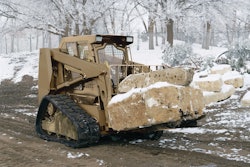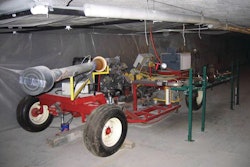
Whether you’re trying to get better school grades from a child or encourage stronger sales from the marketing department, creating a sense of competition and reward can be an effective tool to get what you want. The government uses that tool to advance the state-of-the-art for war materiel, helping to drive technology that will ensure troops are safe, efficient, and successful.
In 1940, such an opportunity resulted in one of the most enduring and recognizable war machines, the Jeep. Compared to what’s required of military equipment today, the U.S. Ordnance Technical committee’s request sounds dangerously simple. It wanted a light four-wheel-drive utility vehicle that could carry a 600 lb. payload and weigh 1,300 lbs. or less. Of the more than 175 companies that were invited to submit the proposal, two stepped up to the task of delivering an entirely new machine in the required 75 days.
At deadline day, there was only one: American Bantam Car Co., an automobile manufacturer in Butler, PA, that that was best known for a diminutive but attractive line of cars, the American Austin and American Bantam. The prototype Bantam Reconnaissance Car eventually gave way to the vehicle known during World War II as the “jeep,” and would be built by the thousands by Willys-Overland and Ford. Outfitted with rifles and stretchers, made amphibious or dropped via parachute, the vehicle became the universal runabout of the Allied nations, and has been called one of the most effective weapons of the war.
Times have changed, however. The civilian version of the jeep, the late 1940’s Willys CJ-2A, could not even be legally sold as a new car these days. It’s no longer an appropriate solution for warfare, either. In more recent times competition for wheeled military vehicles has resulted in highly advanced and maneuverable machines such as the M-ATV, built by Oshkosh (see September 2009 issue, available online at oemoffhighway.com).
In tracked equipment, the latest opportunity comes from the U.S. Army, which released a a request for proposal (RfP) for a Ground Combat Vehicle (GCV), the service’s planned next-generation full-spectrum-combat troop carrier. Interested groups had until April 26 to submit their proposals, and in September the Army plans to award up to three contracts for the GCV program’s 27-month technology development phase.
According to the RfP, the vehicle should be designed to take on more armor, power and cooling if needed in the future. From a blast perspective, it needed to be more survivable than an MRAP, as survivable from a ballistic perspective as a Bradley, as mobile as an Abrams, and more lethal than a Bradley.
One of the finalists comes from a partnership of BAE Systems and Northrop Grumman. Utilizing an electric hybrid system, enhanced mobility capabilities will allow the GCV to operate in urban and cross country environments. The team’s vehicle will also have an integrated electronic network capability and embedded intelligence, surveillance and reconnaissance assets to connect the warfighters. The open architecture electronics will also be adaptable to future network upgrades as new technologies mature. The modular armor system will allow the unit commander to rapidly apply or remove kits in the field to adjust to the tactical situation.


















